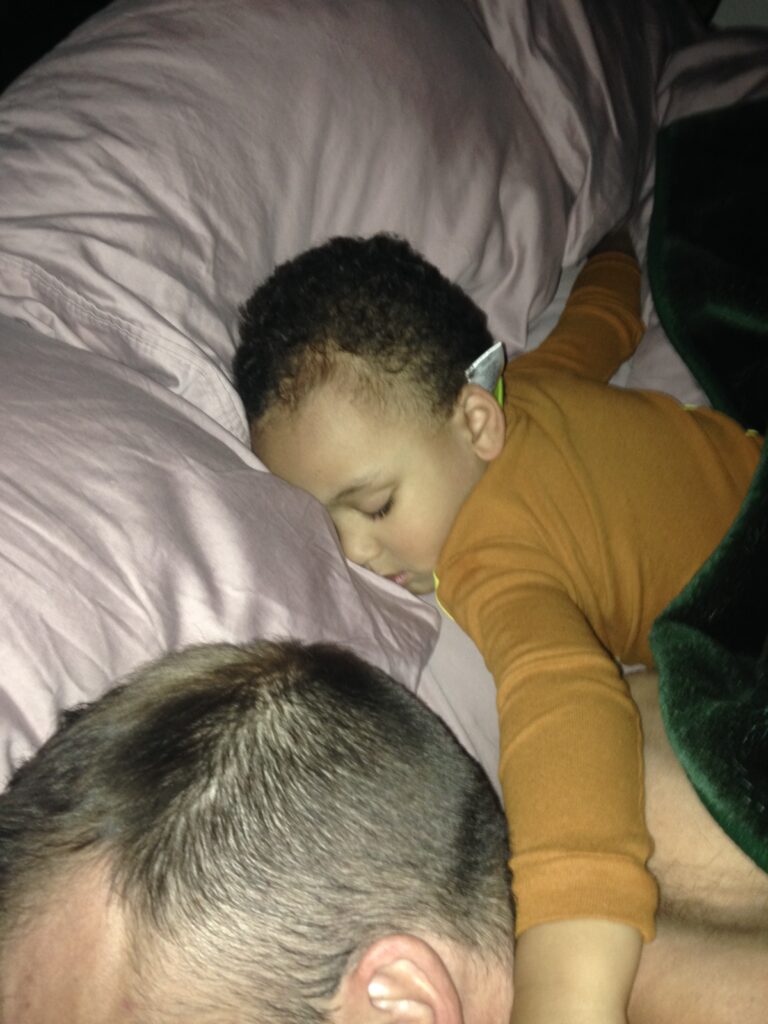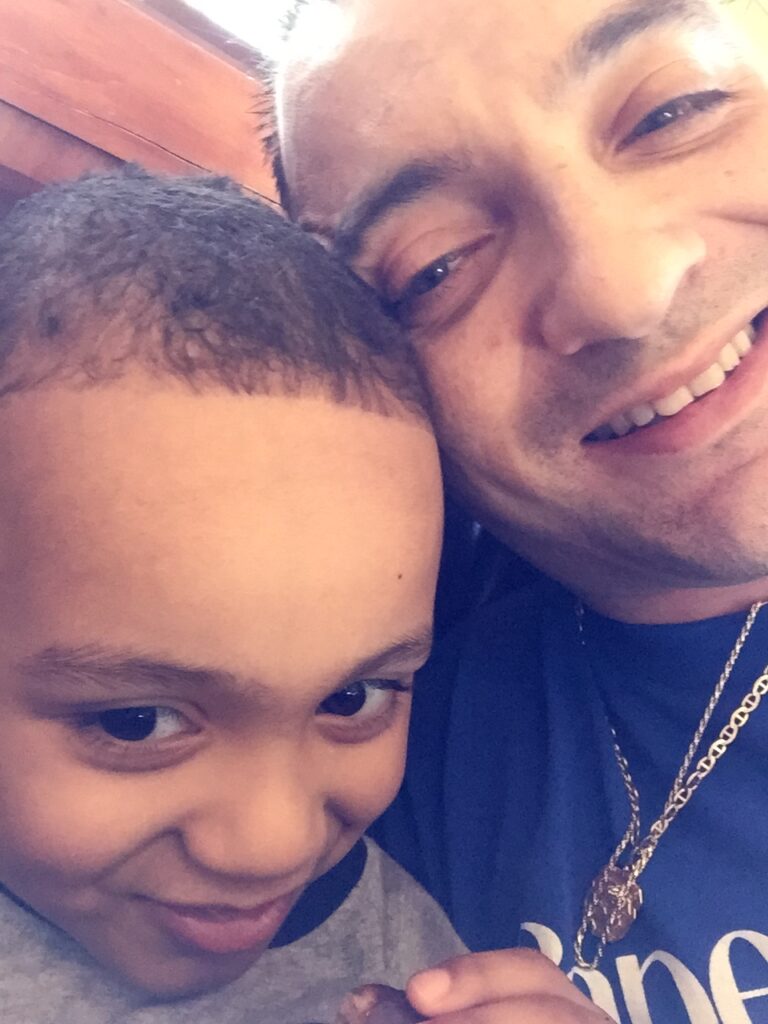Jurisdiction—WIC 300(b), (d); Removal—WIC 361(c)
IN RE L.O.
Published 07/29/2021; Fourth Dist., Div. Two Docket No. E075921
EVEN WHERE PARENTS’ RELATIONSHIP HAS ENDED, CURRENT RISK OF DOMESTIC VIOLENCE MAY BE SHOWN THROUGH RECENT ACTS OF VIOLENCE THAT ARE REASONABLY LIKELY TO CONTINUE; A PARENT’S INADVERTENT EXPOSURE OF A CHILD TO SEXUAL CONDUCT IS NOT JURISDICTIONAL UNDER 300(d) WHERE THERE IS NO EVIDENCE THAT THE PARENT ACTED INTENTIONALLY.
In June 2020, 6-year-old L. was detained from his parents pursuant to a petition alleging, inter alia, that father engaged in domestic violence with partners, which was ongoing, and that he exposed L. to inappropriate sexualized behaviors, resulting in L. acting out in a sexualized manner. L.’s parents shared joint custody, although their ongoing family law matter was contentious. In father’s interviews, father denied a history of domestic violence but noted that mother had socked and scratched him three to four years prior; admitted that L. had witnessed a lot of arguing, including three times when it got physical; and shared that he, mother, and her boyfriend had been in a physical altercation where restraining orders were sought. Father admitted that he and his girlfriend shared a room with L. but denied having sexual relations in front of L. In mother’s interviews, she described a physical altercation in December 2019 involving father and mother’s boyfriend where mother tried to stop the altercation between the men while she held L. in her arms. Mother confirmed that she and father had engaged in verbal fights, slapping matches, and bouts of pushing one another when they were together. Mother, father, and L.’s caregiver (paternal grandmother) all reported that L. displayed sexualized behavior, and paternal grandmother reported that L. had tried to choke his cousin. Parents each blamed the other as the cause of L’s behavior. Based on the reports and arguments, the juvenile court found allegations under subdivisions (b) and (d) true as to father and removed L. from his parents. Father appealed.
Affirmed as modified. Substantial evidence supported the juvenile court’s finding under 300(b) and its order removing L. from father’s custody. However, insufficient evidence supported the court’s finding under 300(d); accordingly, that allegation is stricken. With regard to the 300(b) finding, even though parents’ relationship had ended, and the agency alleged “partners,” rather than 5 mother in the petition, the requisite current risk was shown. Mother and father both admitted to multiple prior incidents of domestic violence in the home. Father noted that mother had socked and scratched him and admitted that L. had witnessed a lot of arguing, including three times when it got physical. Even after parents’ separation, mother described a physical altercation in December 2019 involving father and mother’s boyfriend where mother tried to intervene while she held L. in her arms. Parents remain involved in an acrimonious family law matter, have engaged in domestic violence during custody exchanges, and will likely continue to encounter one another in L.’s presence for the foreseeable future. Father’s efforts to align his case with In re Daisy H. (2011) 192 Cal.App.4th 713, In re Jonathan B. (2015) 235 Cal.App.4th 115, and In re M.W. (2015) 238 Cal.App.4th 1444 are unavailing as father’s case involved more recent acts of violence which the court could reasonably find were likely to continue. With regard to the unsupported 300(d) finding, the only enumerated offense under Penal Code 11165.1 applicable to father here is child molestation, as described in Penal Code 647.6(a)(1). That provision makes it a crime to “annoy[]” or “molest[]” any child under the age of 18. The offensive or annoying conduct becomes criminal when it is sexually motivated. Although L. acted out sexually and may have witnessed father engage in sexual conduct with his girlfriend, there is no evidence that such an error or lapse on father’s part was sexually motivated by father, rather than simply an accident. In other words, although father may have inadvertently exposed L. to sexual conduct with his girlfriend, there is no evidence that he intentionally exposed L. to the behavior. While jurisdiction based on these facts could have been established under 300(b), they do not support a jurisdictional finding under 300(d). Finally, removal was proper because, until it was determined how or where L. learned his sexualized behaviors, which had been decreasing since placed with paternal grandmother, he remained at substantial risk of serious physical harm if returned to father’s care. (AMC)
cited https://www.clccal.org/blog/dependency-legal-news-vol-17-no-6/
Beneficial Parental Relationship Exception—WIC 366.26 – In re B.D.
Published 7/27/21; Fourth Dist., Div. One Docket No.: D078014 download PDF here
FOR PURPOSES OF EVALUATING THE SECOND PRONG OF THE BENEFICIAL PARENTAL RELATIONSHIP EXCEPTION FOR SECTION 366.26, IT IS REVERSIBLE ERROR FOR A COURT TO CONSIDER A PARENT’S LACK OF PROGRESS IN REDRESSING ISSUES THAT LED TO DEPENDENCY IN ISOLATION WITHOUT EVALUATING WHETHER IT HAS ANY AFFECT ON THE CHILDREN’S EMOTIONAL ATTACHMENT TO THE PARENTS. 
The agency filed a petition in 2018 for 6-year-old B.D. and 3-year-old L.D. due to domestic violence and substance abuse issues by the parents. The court sustained the petition, ordered reunification services for mother and father, and placed the children with their paternal grandmother. During the reunification 3 period, both parents failed to comply with their drug testing or substance abuse program requirements, although they did complete domestic violence programs and continued to regularly visit with B.D. and L.D. The court terminated their family reunification services in 2019 and set a section 366.26 hearing. A contested .26 hearing was held in September 2020, in which the parents asserted the beneficial parental relationship exception. The court found that although the parents “easily met” their burden of demonstrating consistent visitation with their children, both parents failed to show they had a significant parental role in the children’s lives such that there was a positive emotional attachment between them and the children. The court stated two reasons for this: because the paternal grandmother fulfilled that role for the children, and the parents’ substance abuse was their “core issue” which had not been resolved over the past two years. The court also found that even if that kind of parental relationship was demonstrated, the detriment resulting from a termination of parental rights was not outweighed by the benefits of adoption. The court found the beneficial parent relationship exception did not apply and terminated both mother’s and father’s parental rights. Both parents appealed.
Reversed. The juvenile court erred in its analysis of the beneficial parental relationship exception in light of the new California Supreme Court decision, In re Caden C. (2021) 11 Cal.5th 614, specifically regarding the second prong of the test, whether “the child has a substantial, positive, emotional attachment to the parent—the kind of attachment implying that the child would benefit from continuing the relationship.” While a review of the record indicates the parents resolved their domestic violence issues but did not address their ongoing substance abuse, the trial court did not examine whether those issues impacted the parents’ visitation and relationship between the parents and the children. The evidence indicates the parents had a beneficial relationship with their children, specifically that the children exhibited a strong, happy bond with the parents during visits and mother and father properly parented the children “on the spot” by directing, praising, and engaging with the children. Although the CSW testified that mother and father did not engage in a day-to-day parenting role with the children, these statements seemed directed at parents’ inability to parent their children full time, not whether they serve in a parental role during their allotted visitation time. This is concerning because it is unclear to what extent the trial court relied on the parents’ continued substance abuse issues in making its findings regarding the harm of severing the parent-child relationship. Accordingly, the order terminating parental rights is reversed and the case is remanded to hold a new .26 hearing in accordance with the principles articulated in In re Caden C. (SW) cited https://www.clccal.org/blog/dependency-legal-news-vol-17-no-6/
CLICK ANY PHOTO TO TAKE YOU TO THE LOVE OF FATHER & SON PAGE a TRUE STORY OF DEPRIVATOIN OF RELATIONSHIP PAIN
To Learn More…. Read MORE Below and click the links
Learn More About True Threats Here below….
We also have the The Brandenburg v. Ohio (1969) – 1st Amendment
CURRENT TEST = We also have the The ‘Brandenburg test’ for incitement to violence – 1st Amendment
We also have the The Incitement to Imminent Lawless Action Test – 1st Amendment
We also have the True Threats – Virginia v. Black is most comprehensive Supreme Court definition – 1st Amendment
We also have the Watts v. United States – True Threat Test – 1st Amendment
We also have the Clear and Present Danger Test – 1st Amendment
We also have the Gravity of the Evil Test – 1st Amendment
We also have the Elonis v. United States (2015) – Threats – 1st Amendment
Learn More About What is Obscene….
We also have the Miller v. California – 3 Prong Obscenity Test (Miller Test) – 1st Amendment
We also have the Obscenity and Pornography – 1st Amendment
Learn More About Police, The Government Officials and You….
We also have the Brayshaw v. City of Tallahassee – 1st Amendment – Posting Police Address
We also have the Publius v. Boyer-Vine –1st Amendment – Posting Police Address
We also have the Lozman v. City of Riviera Beach, Florida (2018) – Retaliatory Police Arrests
We also have the Nieves v. Bartlett (2019) – 1st Amendment – Retaliatory Police Arrests
We also have the Freedom of the Press – Flyers, Newspaper, Leaflets, Peaceful Assembly – 1st Amendment
We also have the Insulting letters to politician’s home are constitutionally protected, unless they are ‘true threats’ – 1st Amendment
We also have the Introducing TEXT & EMAIL Digital Evidence in California Courts – 1st Amendment
We also have the First Amendment Encyclopedia very comprehensive – 1st Amendment
ARE PEOPLE LYING ON YOU? CAN YOU PROVE IT? IF YES…. THEN YOU ARE IN LUCK!
We also have the Penal Code 118 PC – California Penalty of “Perjury” Law
We also have the Federal Perjury – Definition by Law
We also have the Penal Code 132 PC – Offering False Evidence
We also have the Penal Code 134 PC – Preparing False Evidence
We also have the Penal Code 118.1 PC – Police Officers Filing False Reports
We also have the Spencer v. Peters – Police Fabrication of Evidence – 14th Amendment
We also have the Penal Code 148.5 PC – Making a False Police Report in California
We also have the Penal Code 115 PC – Filing a False Document in California
Know Your Rights Click Here (must read!)
Under 42 U.S.C. $ection 1983 – Recoverable Damage$
42 U.S. Code § 1983 – Civil Action for Deprivation of Right$
$ection 1983 Lawsuit – How to Bring a Civil Rights Claim
18 U.S. Code § 242 – Deprivation of Right$ Under Color of Law
18 U.S. Code § 241 – Conspiracy against Right$
$uing for Misconduct – Know More of Your Right$
Police Misconduct in California – How to Bring a Lawsuit
New Supreme Court Ruling – makes it easier to sue police
RELATIONSHIP WITH YOUR CHILDREN & YOUR CONSTITUIONAL RIGHT$ + RULING$
YOU CANNOT GET BACK TIME BUT YOU CAN HIT THOSE PUNKS WHERE THEY WILL FEEL YOU = THEIR BANK
We also have the 9.3 Section 1983 Claim Against Defendant as (Individuals) — 14th Amendment this CODE PROTECTS all US CITIZENS
We also have the 9.32 – Interference with Parent / Child Relationship – 14th Amendment this CODE PROTECTS all US CITIZENS
We also have the PARENTS RIGHTS SCOTUS RULINGS & HELP HERE for 14th Amendment PARENTS RIGHTS Help!
California Civil Code Section 52.1 Interference with exercise or enjoyment of individual rights
Contesting / Appeal an Order / Judgment / Charge
Options to Appealing – Fighting A Judgment Without Filing An Appeal Settlement Or Mediation
Cal. Code Civ. Proc. § 1008 Motion to Reconsider
Penal Code 1385 – Dismissal of the Action for Want of Prosecution or Otherwise
Penal Code 1538.5 – Motion To Suppress Evidence in a California Criminal Case
CACI No. 1501 – Wrongful Use of Civil Proceedings
Penal Code “995 Motions” in California – Motion to Dismiss
WIC § 700.1 – If Court Grants Motion to Suppress as Evidence










